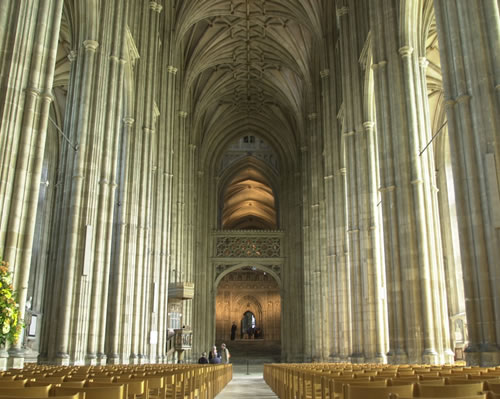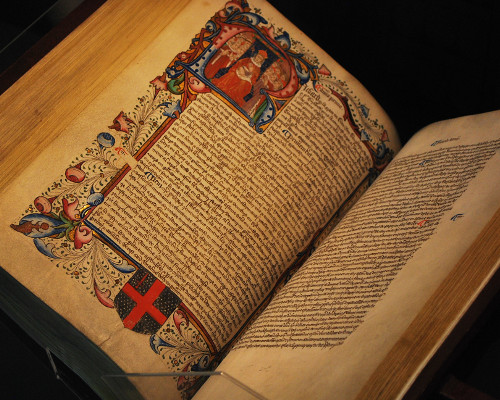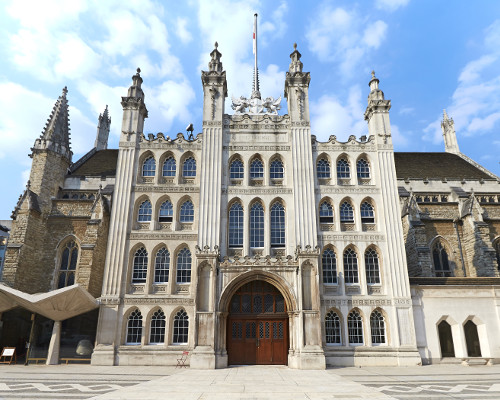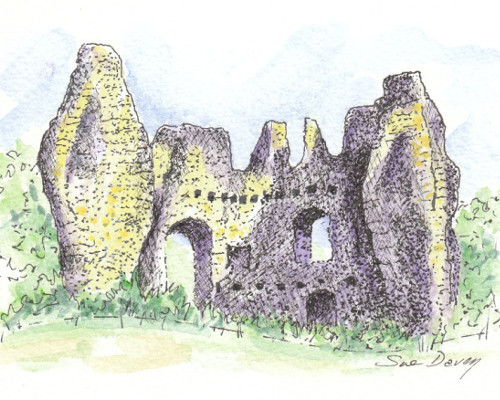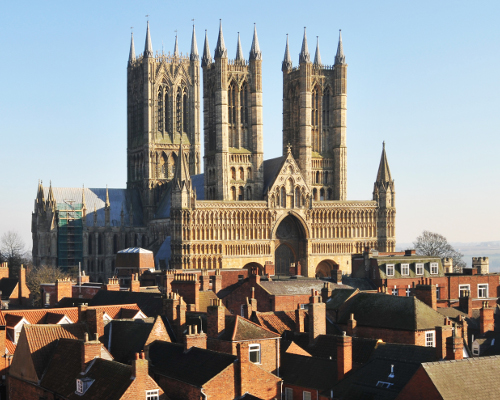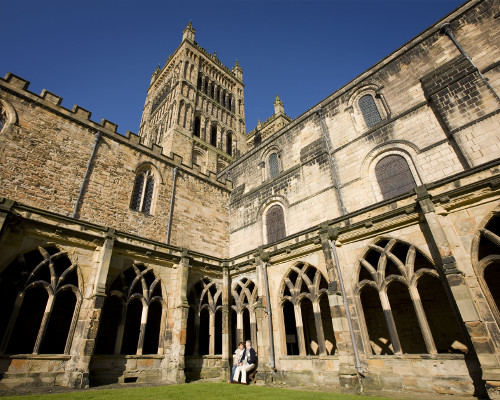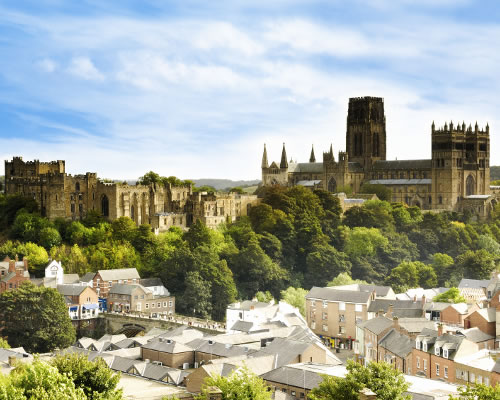- All
- Attractions
-
Canterbury Cathedral
Part of Trail 4
Location: Canterbury, Kent
Visit the WebsiteCanterbury Cathedral forms one third of Canterbury’s UNESCO World Heritage Site. From the conversion of the Anglo-Saxons of Kent to Christianity in 597 and the proclamation of the first Archbishop of Canterbury, it was at the core of religious life and many political disputes with the Crown. In 1170 the infamous murder of Thomas Becket took place here.
The accession of Stephen Langton as Archbishop of Canterbury in 1207 brought church-state tensions to a head. Langton became an implacable opponent of King John and joined with rebellious barons and other bishops to limit the royal powers. This led directly to the showdown that produced Magna Carta. Langton’s input to the charter is emphasised by the first clause, which protects the freedom, rights and liberties of the English church.
-
City of London Heritage Gallery
Part of Trail 1
Location: City of London, London
Visit the WebsiteThe Heritage Gallery showcases important and precious documents from the impressive archives of the City of London Corporation. A changing display of exhibits includes Magna Carta and other medieval documents from the City’s history like the beautifully-illustrated Carta Antiquae (an important legal reference for medieval City governors), the 1067 William charter and a house deed signed by Shakespeare (one of only six documents carrying his signature).
Entry to the gallery is free.
Open seven days a week. -
Salisbury Cathedral and Magna Carta
Part of Trail 2
Location: Salisbury, Wiltshire
Visit the WebsiteSalisbury Cathedral has been home to perhaps the best preserved of only four remaining original 1215 Magna Carta since it was first delivered.
On 14 February 2015, a brand new exhibition opens using the latest interpretation techniques to bring the documents ancient background and modern significance to life to visitors. Using displays, media, artefacts, interactive stations and film, this permanent installation will tell the story of how Magna Carta came about and explore its lasting legacy. It will also draw attention to the representations of equality and justice represented in the Cathedral’s architecture.
Visitors will also be encouraged to express and share their own views about their civil rights.
-
Guildhall Galleries
Part of Trail 1
Location: City of London, London
Visit the WebsiteThe magnificent Guildhall has long been the home of City governance, with the current Great Hall dating from 1411. Today, the complex is a wonderful mix of the ancient and the new, comprising gothic architecture, the pomp and circumstance of the City of London, the ruins of London’s Roman Amphitheatre, the important archives of Guildhall Library, the Heritage Gallery, a Wren church and the City of London’s art collection. Tours of the Great Hall are available throughout the year. Entry to Guildhall Art Gallery, London’s Roman Amphitheatre, the Heritage Gallery, St Lawrence Jewry and Guildhall Library is free.
-
King John’s Castle
Location: Odiham, Hampshire
Visit the WebsiteOdiham Castle was built by King John as a secure and convenient stopping place. He set out for Windsor from here on 10th June 1215, agreeing the Articles of Barons at Runnymede that same day.
River, wide moats and marsh added protection to the tower of the castle and its strength was proven in 1216 when a tiny garrison resisted siege by the French for 2 weeks. The castle is approached by lanes, footpaths and towpath – offering healthy walks from Odiham, North Warnborough or Greywell and nearby Newlyns Farm Shop Cafe.
Picturesque High Street of Odiham boasts an array of restaurants and cafes as well as the beautiful church of All Saints – and a ‘Magna Carta Passport Office’.
-
Lincoln Cathedral
Part of Trail 3
Location: Lincoln, Lincolnshire
Visit the WebsiteThe vibrant cultural quarter of Lincoln is home to one of the greatest Cathedrals in Europe. Considered one of the hidden gems of Britain, Lincoln is a medieval city built on the site of a major Roman settlement. Visitors today can see the past, present and future combined in a magnificent setting.
The Cathedral possess one of the four remaining original Magna Carta from 1215 which it displays in the Castle nearby, drawing people from across the world to see the ‘birth certificate of democracy’.
This iconic building houses breathtaking architecture, a medieval library, the shrine of St.Hugh, the tomb of Katherine Swynford and many more hidden treasures.
The Cathedral is open daily and tours can be booked on arrival.
-
Durham Cathedral
Part of Trail 3
Location: Durham City, Durham
Visit the WebsiteOften cited as the greatest Norman building in Europe, and recently voted the UK’s Number One Landmark by TripAdvisor users, step inside Durham Cathedral to discover breathtaking Romanesque architecture, exquisite stained glass, the Shrine of St Cuthbert and resting place of St Bede.
Durham Cathedral holds three editions of Magna Carta dated 1216, 1225 and 1300. The 1216 issue – the only surviving copy – will be on display from 1 June to 31 August 2015 at Durham University’s Palace Green Library as part of ‘Magna Carta and the changing face of revolt’.
Durham Cathedral is in the midst of a capital development programme called Open Treasure which will create world class exhibition spaces to display its collections dating back to the Anglo-Saxon period.
-
Durham Castle
Part of Trail 3
Location: Durham City, Durham
Visit the WebsiteThe Durham City skyline is one of the most stunning city panoramas in Europe, dominated by the Durham Cathedral and Castle UNESCO World Heritage Site. Originally built in the 11th Century under William the Conqueror as a projection of the Norman king’s power in the north of England. Now a college of Durham University, you can tour the castle with a student guide.

